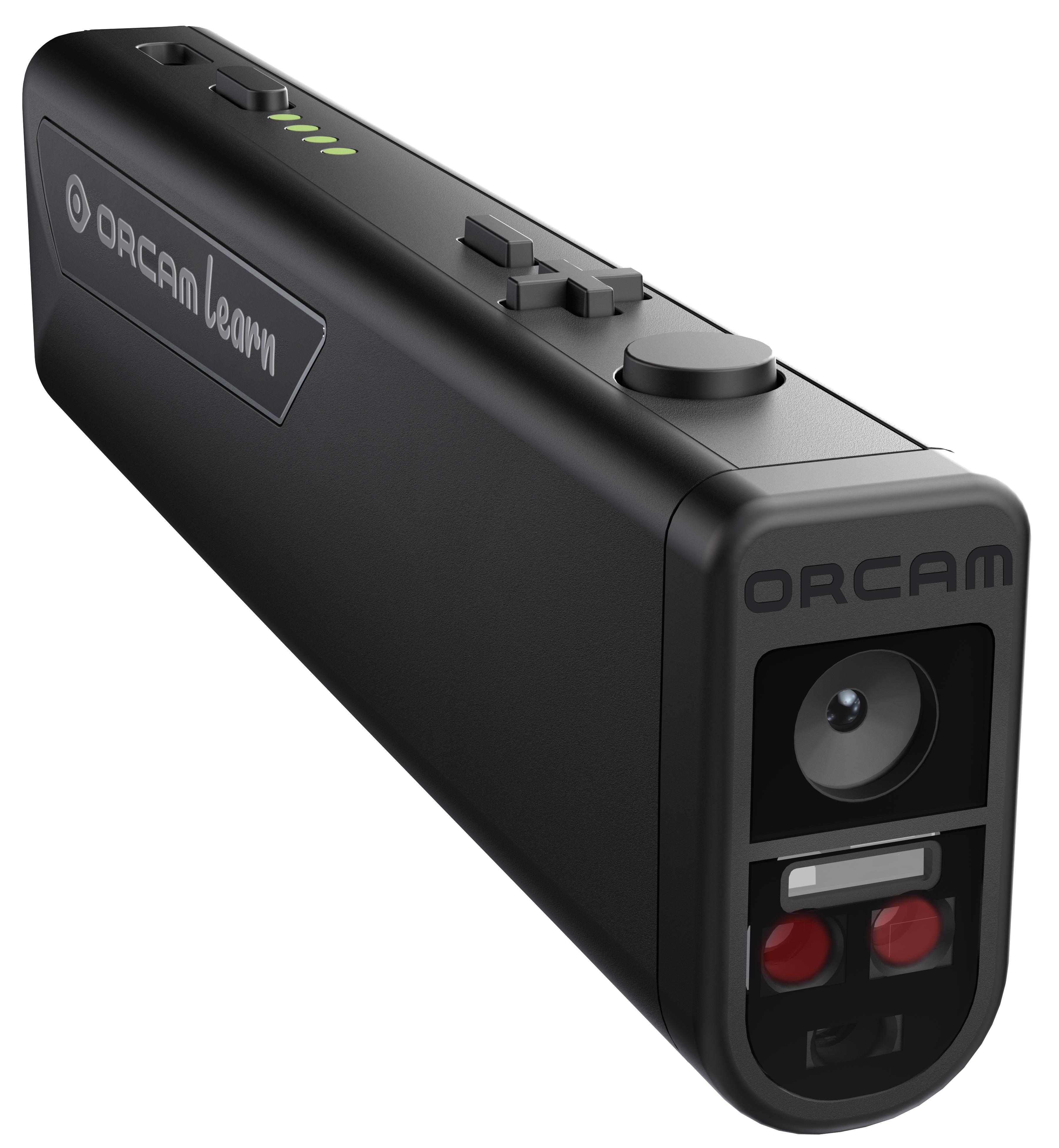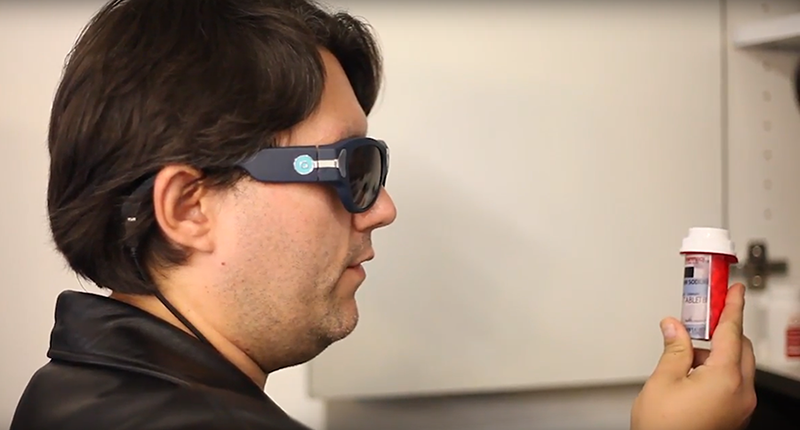Speech-to-Text Devices for Low Vision: Narrowing the Communication Gap
Speech-to-Text Devices for Low Vision: Narrowing the Communication Gap
Blog Article
Discover Innovative Tools Made for the Visually Impaired
The growth of ingenious devices for the aesthetically impaired represents a significant development in ease of access and independence. Technologies such as wise glasses with AI capabilities and mobile applications created to give acoustic summaries are reshaping day-to-day experiences for individuals.
Smart Glasses for Navigating

Smart glasses designed for navigating are transforming the method visually damaged people communicate with their environment. These advanced gadgets make use of a combination of electronic camera technology, expert system, and acoustic feedback to supply real-time information regarding environments. By using obstacle discovery systems, wise glasses can alert customers to prospective dangers, allowing safer mobility in both unfamiliar and acquainted setups.
The combination of GPS technology additionally enhances navigating capacities, enabling customers to receive acoustic directions as they relocate. This hands-free technique not just cultivates freedom however additionally empowers aesthetically damaged people to navigate metropolitan landscapes with raised self-confidence. In addition, many smart glasses are outfitted with features that determine spots and street indicators, giving contextual details that enhances the customer experience.
Additionally, the development of these devices is continuously advancing, with companies working to boost the precision of item acknowledgment and expand the array of navigational functions. As clever glasses end up being much more affordable and easily accessible, they hold the possible to dramatically transform day-to-day live for visually damaged customers. Ultimately, these cutting-edge tools represent an essential step towards inclusivity, offering improved flexibility and a greater sense of autonomy for individuals navigating the world around them.

Mobile Application for Daily Living
How can mobile applications enhance the lives of visually impaired people? Mobile apps are reinventing the method aesthetically damaged customers navigate their settings, take care of everyday jobs, and gain access to info. These applications supply necessary support with various capabilities, promoting freedom and enhancing lifestyle.
A number of ingenious mobile apps are made particularly for daily living. As an example, apps like Be My Eyes link visually impaired customers with sighted volunteers by means of video telephone calls, enabling them to receive real-time help with tasks such as reviewing tags or navigating unknown spaces. Seeing AI, established by Microsoft, makes use of artificial knowledge to define environments, checked out message, and identify items, effectively transforming a mobile phone right into an effective tool for day-to-day help.
Additionally, navigation apps tailored for the aesthetically impaired, such as Aira and BlindSquare, provide audio-based instructions and environmental details, allowing individuals to traverse their surroundings securely and confidently. Beyond navigation and instant aid, mobile apps also support organization and job management, with features that help users establish reminders, produce order of business, and track appointments. In recap, mobile applications work as vital resources, equipping visually damaged people to lead even more independent and meeting lives.
Wearable Technologies for Assistance
Empowerment via innovation is significantly evident in the realm of wearable gadgets designed to assist aesthetically damaged individuals. These innovative devices incorporate effortlessly right into day-to-day live, improving navigation and supplying vital comments to individuals. As an example, smart glasses furnished with cams can check out and recognize faces text out loud, enabling users to interact even more with confidence in specialist and social setups.
Another significant innovation is making use of haptic feedback systems in wearable gadgets. These systems make use of resonances or various other tactile signals to communicate info regarding the individual's atmosphere, such try this website as challenges or changes in surface, boosting mobility and safety. Wearable modern technologies additionally consist of wristbands that link to mobile phones, notifying users visit this page to notices via subtle resonances, therefore boosting connection without dependence on aesthetic signs.
As these technologies remain to develop, they are not just enhancing freedom for aesthetically impaired individuals but additionally cultivating a greater sense of inclusion in culture. By bridging the space between challenges faced in day-to-day living and the possibility for freedom, wearable technologies act as essential devices in the mission for equality and empowerment for those with visual disabilities.
Audio Summary Devices
Sound summary tools play a vital function in enhancing accessibility for aesthetically damaged people, supplying them with the ability to involve with visual media. Speech-to-text devices for low vision. These devices offer narrated descriptions of key aesthetic elements in movies, television programs, and live performances, making certain that customers can totally comprehend the context and feelings communicated via visuals
Audio description can be incorporated into numerous platforms, including streaming services, movie theater screenings, and live cinema. Several preferred streaming click to find out more solutions currently consist of audio description as an access function, permitting audiences to select it quickly. Along with mainstream media, specialized apps also exist, giving audio descriptions for art exhibits, galleries, and various other cultural events.
The performance of audio description rests on the skill of the storytellers, who must convey visual details succinctly without interfering with the initial audio. Innovations in this field are likewise leading the way for more customized experiences, where customers can adjust the level of information and pacing according to their choices.
Braille Innovations and Gadgets
Braille devices and developments have dramatically changed the method visually impaired individuals engage with message and information. Modern improvements have led to the advancement of versatile tools that improve literacy and independence amongst users.
In addition, mobile Braille notetakers incorporate conventional Braille input with contemporary functionalities, helping with note-taking, scheduling, and file editing on the move. Speech-to-text devices for low vision. These portable gadgets typically feature text-to-speech abilities, connecting the gap in between Braille and auditory details
Additionally, innovative Braille printers have emerged, allowing customers to generate Braille tags, files, and instructional materials successfully. This ease of access fosters greater involvement in academic and expert settings, eventually advertising inclusivity.
Moreover, research right into wise Braille innovations remains to increase. Instruments that integrate expert system are being checked out to offer real-time navigation support and contextual details, improving the customer experience in diverse setups. In general, these developments mirror a commitment to empowering aesthetically impaired people with technology, ensuring they can easily accessibility and engage with the globe around them.

Conclusion
The advancement of ingenious devices for the visually damaged considerably enhances independence and top quality of life. These innovations not just foster higher incorporation however additionally promote autonomy in daily tasks, eventually adding to a more easily accessible and fair society for visually damaged individuals.
As smart glasses come to be more inexpensive and easily accessible, they hold the potential to dramatically transform day-to-day life for aesthetically impaired individuals. Mobile applications are transforming the means aesthetically impaired users browse their environments, handle everyday jobs, and access information. Applications like Be My Eyes attach visually impaired users with sighted volunteers by means of video clip telephone calls, allowing them to obtain real-time aid with tasks such as checking out labels or browsing unknown rooms.In addition, navigation applications tailored for the visually damaged, such as Aira and BlindSquare, provide audio-based directions and ecological info, allowing users to traverse their surroundings securely and with confidence.The development of cutting-edge devices for the aesthetically damaged dramatically enhances independence and quality of life.
Report this page